Icom M510, marine VHF meets smartphone
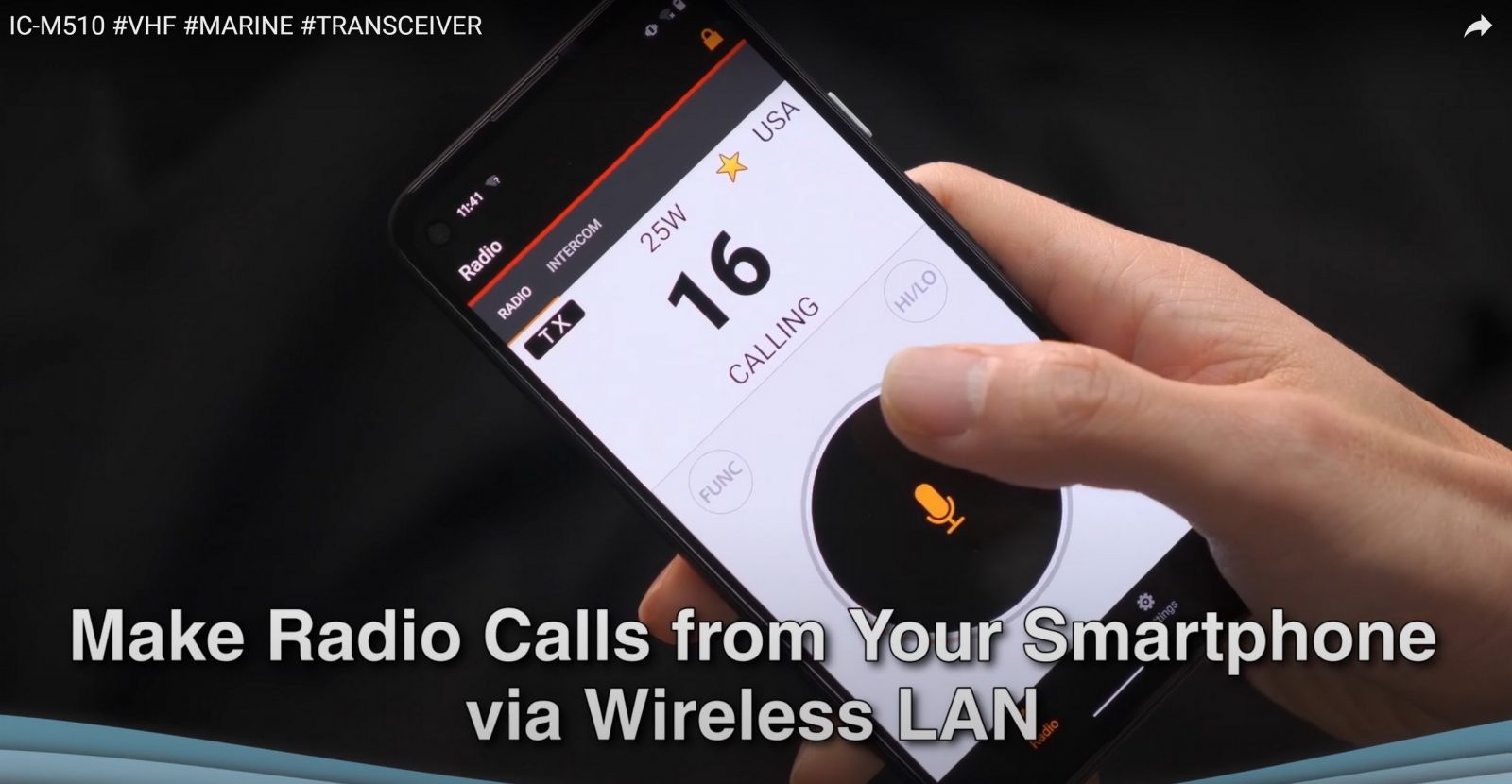
The headline feature of Icom’s new IC-M510 fixed marine VHF radio has to be its ability to use a smartphone as a wireless mic. It’s never been done before, and it could be quite useful; picture a free extra VHF mic that’s already in your pocket or charging next to your berth. There’s more to like about the new radio design — plus another Icom innovation, possibly controversial — but let’s look at more details about the smartphone support.
As noted on the M510 product page, the new radio includes a 2.4 GHz WLAN — as in Wireless Local Area Network, also simply known as WiFi — and that’s how phones integrate with the VHF, along with Icom’s RS-M500 remote control app. This software will be available for iOS and Android phones when the M510 ships, but in the meantime, the M510 marketing video indicates that it can control the most common radio functions and also work as an intercom with the base station.
So, yes, it looks like an M510 owner can grab the phone next to their berth and listen to the local weather forecast or scan around for traffic in a new cruising area. And while the manual also isn’t available yet — the radio was only announced recently, without a shipping date or prices — the folks at Icom America told me that the new radio can either create its own WiFi network or join one that’s already on the boat. That’s good news for any boat already set up to provide smartphones and tablets with, say, nav app info, or audio remote control, and/or Internet connectivity via WLAN.
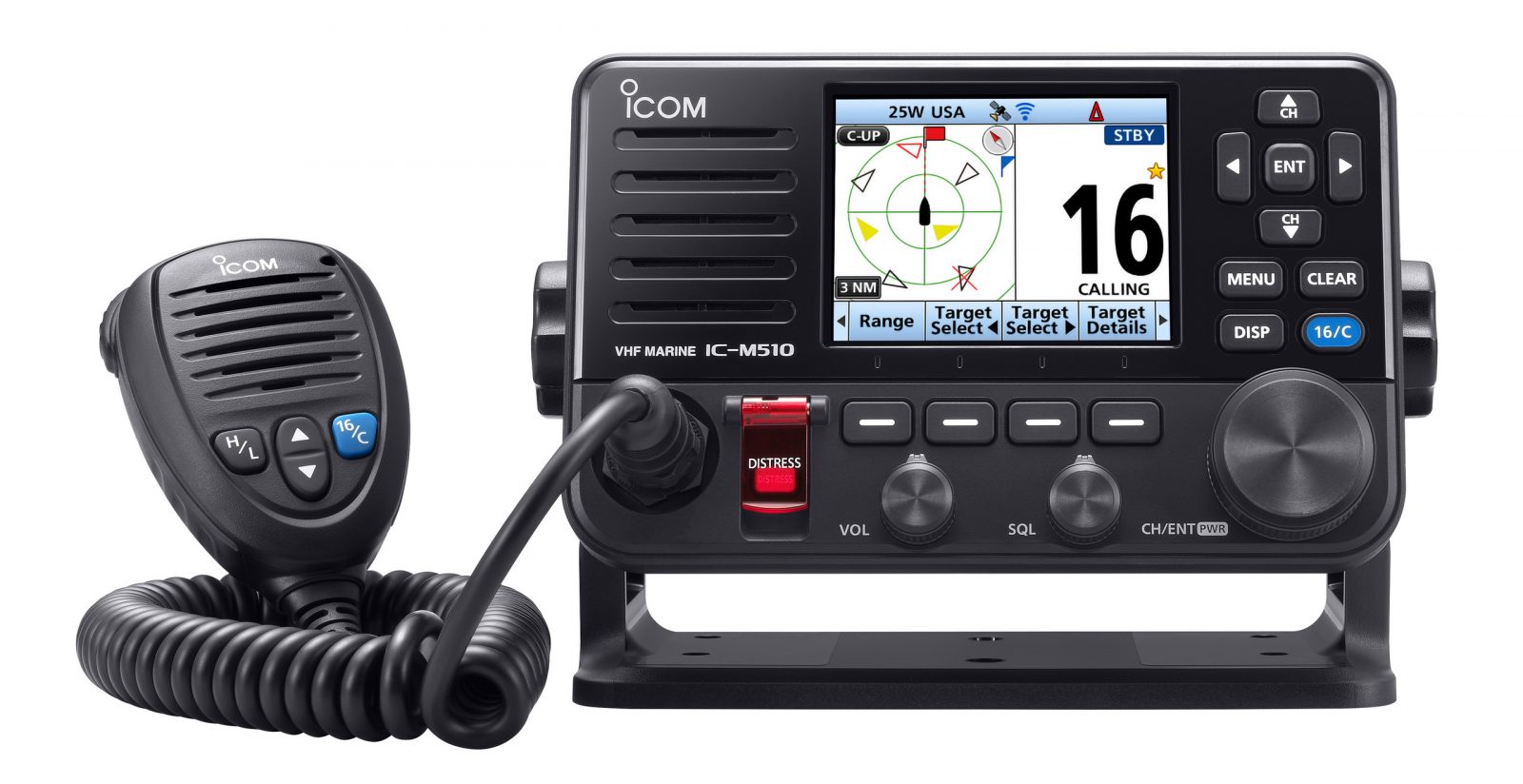
Now let’s look at the M510 hardware. I have a good feeling about that “full color 3.5″ TFT LCD screen with near 180-degree viewing angles” because it seems very similar to the Icom M605’s 4.3″ screen, and that radio looked (and sounded) great on Gizmo for a couple of years. But then again, I’ve never understood why there aren’t more VHF radios with color screens. Even back in 2005, the relatively tiny color screen on the Uniden UM625c could clearly show an impressive amount of information.
The M510’s bright, crisp color screen is also going to look good alongside modern multifunction displays. And it’s apt to fit well, too, as this new design is much smaller than an M605 and “nearly half the depth of the M506“. Also note that the wired fist mic can be attached to the back of M510, instead of the front, which contributes to the “sleek” install seen above left.
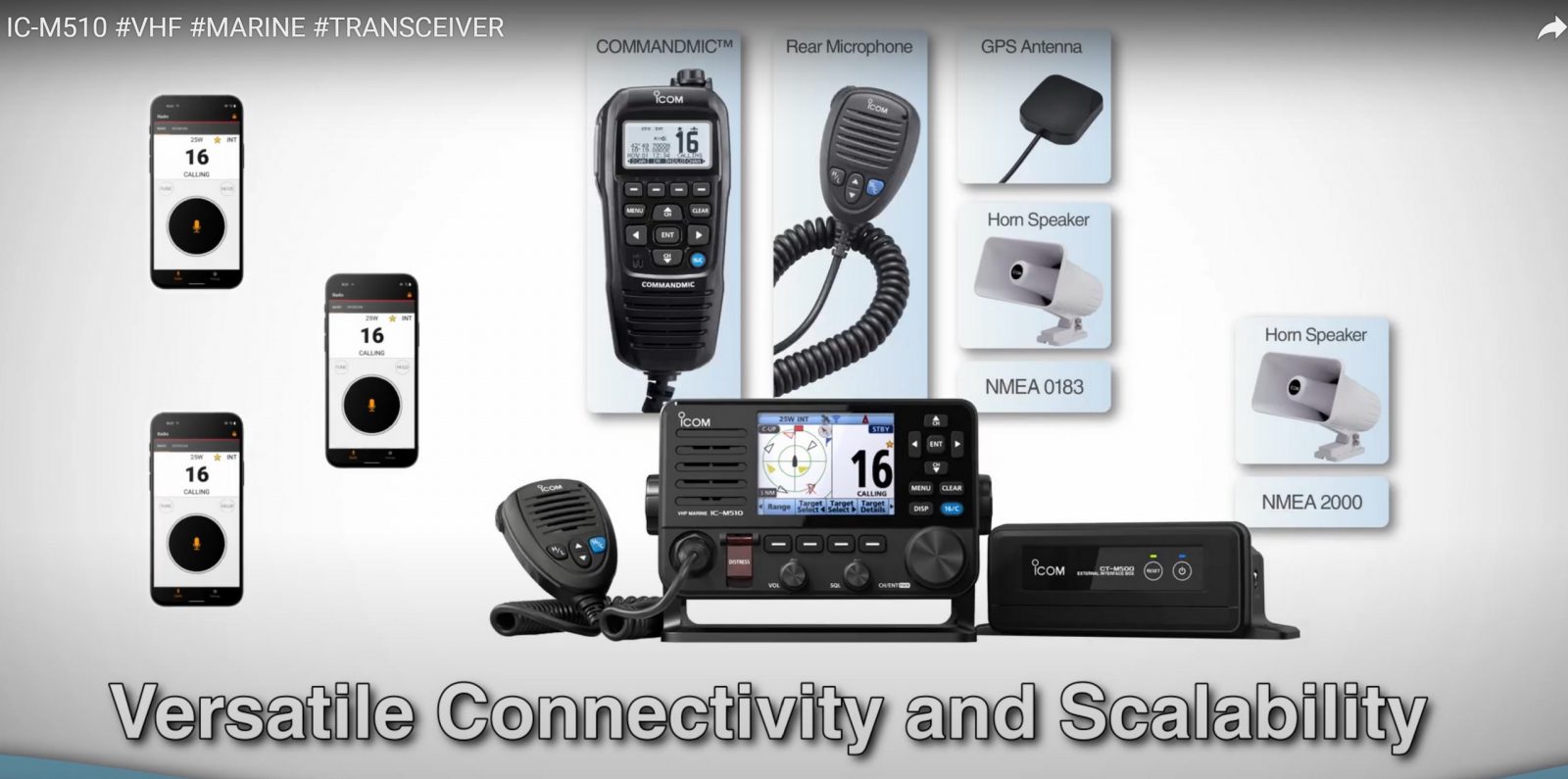
Actually, three different smartphones can be set up with the M500 remote control app to work with the M510 over its own or the boat’s WLAN, though of course only one can control the radio at once. And the same is true of the Icom CommandMic that can be cabled to the back of the 510. The radio also has its own built-in GPS (with an external antenna option) and audio output to an external speaker. And, finally, the 510 model with a built-in AIS receiver also has NMEA 0183 highspeed output to feed the target info to other displays.
However, one thing that Icom means by the M510’s “versatile connectivity and scalability” is that both NMEA 2000 input/output and two-way hailer/horn functions are options handled by the very unusual CT-M500 Wireless Interface. Indeed, that means a separate module (with its own power connection) that connects to the radio via WiFi/WLAN.
Admittedly, the back of the compact M510 is already crowded, but it seems like hailer I/O and NMEA 2000 could have been included — at least as pigtail style connections — and thus eliminate the need for the CT-M500. After all, most skippers who will choose a premium color Icom VHF probably want the hailer/horn feature, and some modern MFDs don’t even have an 0183 AIS port anymore. Moreover, the M510 model without a built-in AIS receiver can still display AIS target info — and place individual DSC calls to them — if the data is coming in over NMEA 2000.
So the CT-M500 module seems like an odd design decision. In fact, some Panbo Forum denizens have already questioned the reliability of NMEA 2000 over Icom’s WLAN, especially if the data also travels through a boat router. But then again, Icom already has a lot of experience with WLAN radio networks, even on big steel vessels, and thus it may turn out that the M510’s unusual wireless interface works just fine.
The screenshots above are from the M605 manual, but I’m guessing that the M510 interface is very similar as both radios have the same four “Software Keys” plus the Left and Right buttons you use to scroll among the possible software functions. Now some of those functions have submenus — as on the AIS screen seen below — and there’s also a Menu button with lots more settings and features. Such is the nature of a modern DSC VHF radio, and why a large, informative screen along with a well-organized interface can really help you to get a radio to do what you want.
At any rate, I found the M605 fairly easy to use, and I don’t think that the M510’s slightly smaller screen will make much difference. It’s that bright, crisp color display that really makes the interface sing. But that said, I do wish that Icom made it possible to customize the softkey functions like Standard Horizon does with its GX6000 (and some other models). That entry also explains how a laptop can field update GX6000 firmware, which I also wished for with the M605. And there’s a particular, and somewhat comical, reason that’s referenced in the screenshot upper right.
It’s great that the super-bright M605 screen can be deeply dimmed down and also put in red Night Mode to protect your night vision underway, and no doubt true of the M510 as well. But the M605 also remembers the last backlight setting when shutting down, and so you can find yourself the next morning looking at a screen so dim it appears blank, and then challenged to step through the Software Key functions trying to find the Backlight controls.
It looks like Icom has solved this problem with a dedicated Display button on the M510, but making a VHF easily updatable seems like a good idea given how complex they’ve become. The M605, for instance, might have been changed so that power cycling would return it to normal daytime screen backlighting. So I was hoping that the new M510 would be updatable via the Icom smart device apps — presumably easier than including a USB port as Standard Horizon does on some models — but apparently that’s not so.
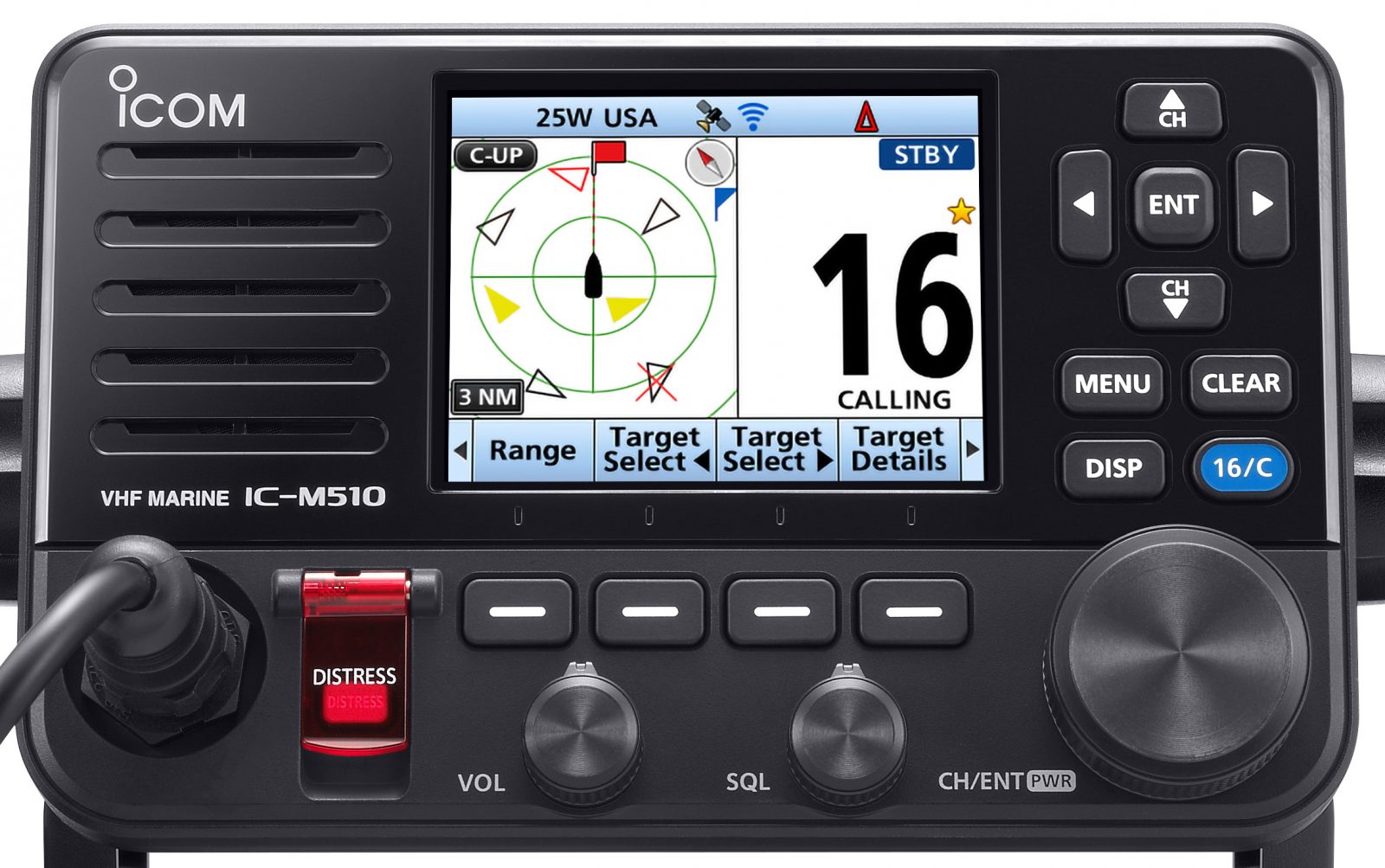
Getting back to basics, the new M510 certainly is a handsome VHF radio. And I know many skippers will appreciate the separate Volume, Squelch, and Channel knobs. Add the WiFi and apps that let most anyone use the radio on their own color screen, from most anywhere on the boat, and Icom has put together quite a modern package. I hope to report on M510 shipping and pricing as soon as that’s possible, and then we’ll get to hear how well it works.
I’m also hoping to see color screen VHF radios from other manufacturers — heck, remote mics and handhelds too — and no discussion of modern marine radios should leave out Vesper Marine’s Cortex. Ben Stein and I have been testing and writing about Cortex for months, and I think it’s well along toward Vesper’s ambitious goal of creating “The world’s most advanced VHF with multi-station wireless touchscreen handsets” (plus full AIS transponder and offboard monitoring included).
In fact, Icom’s willingness to use WiFi and smart devices to make VHF calls can be seen as an endorsement of the Cortex architecture, while boaters not ready to give up knobs and a hand mic at the helm may find the M510 modern enough.


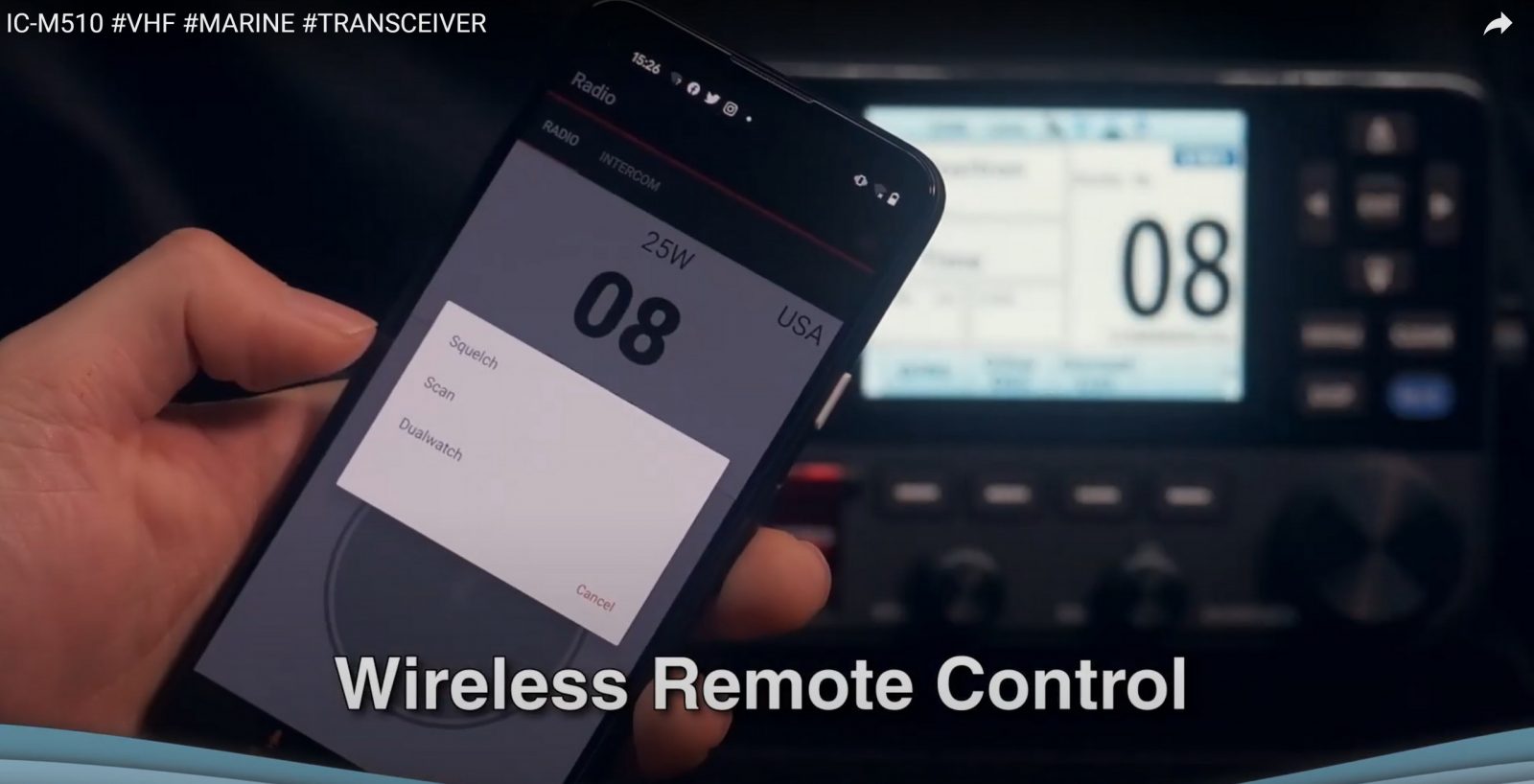
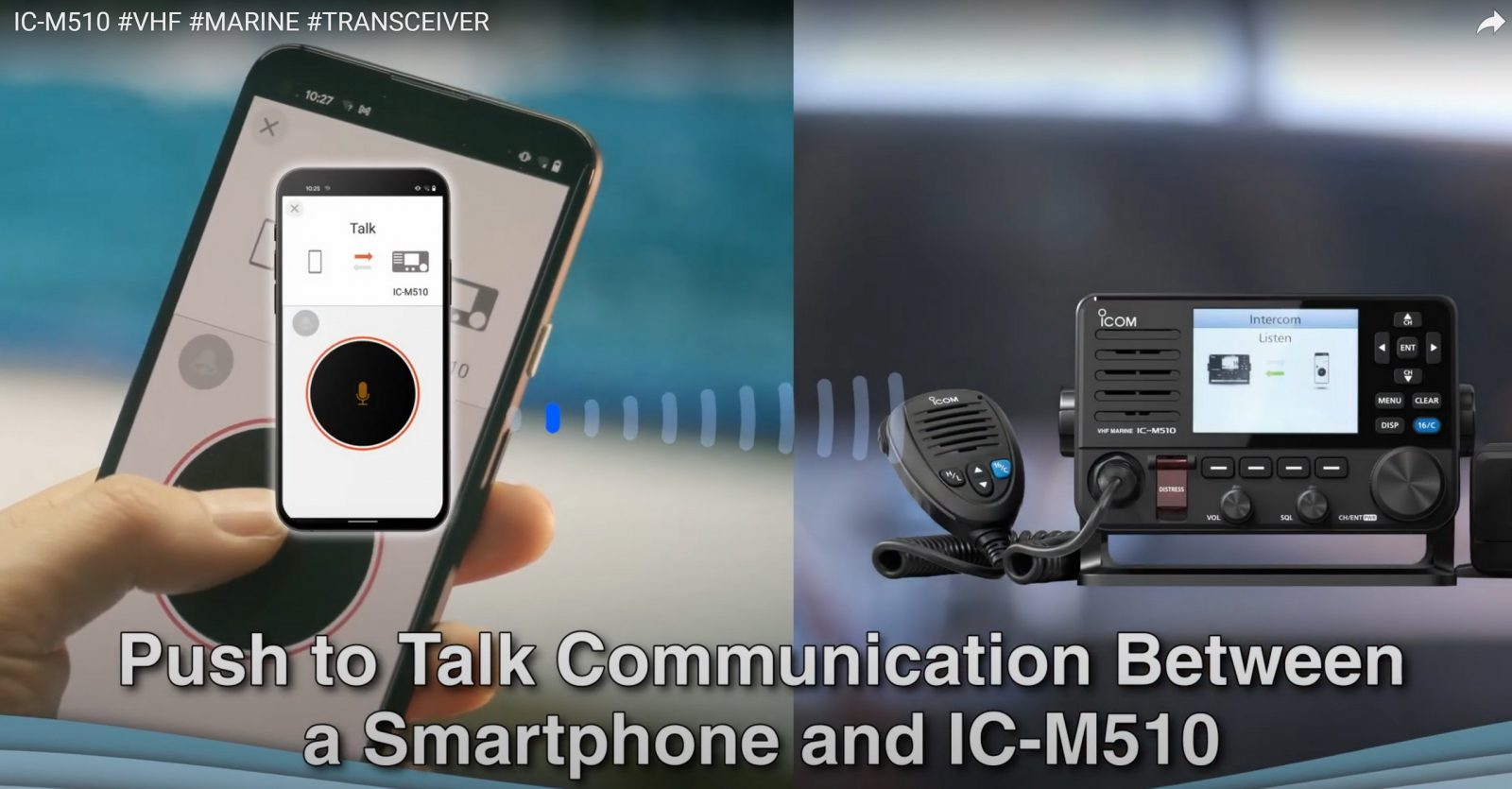
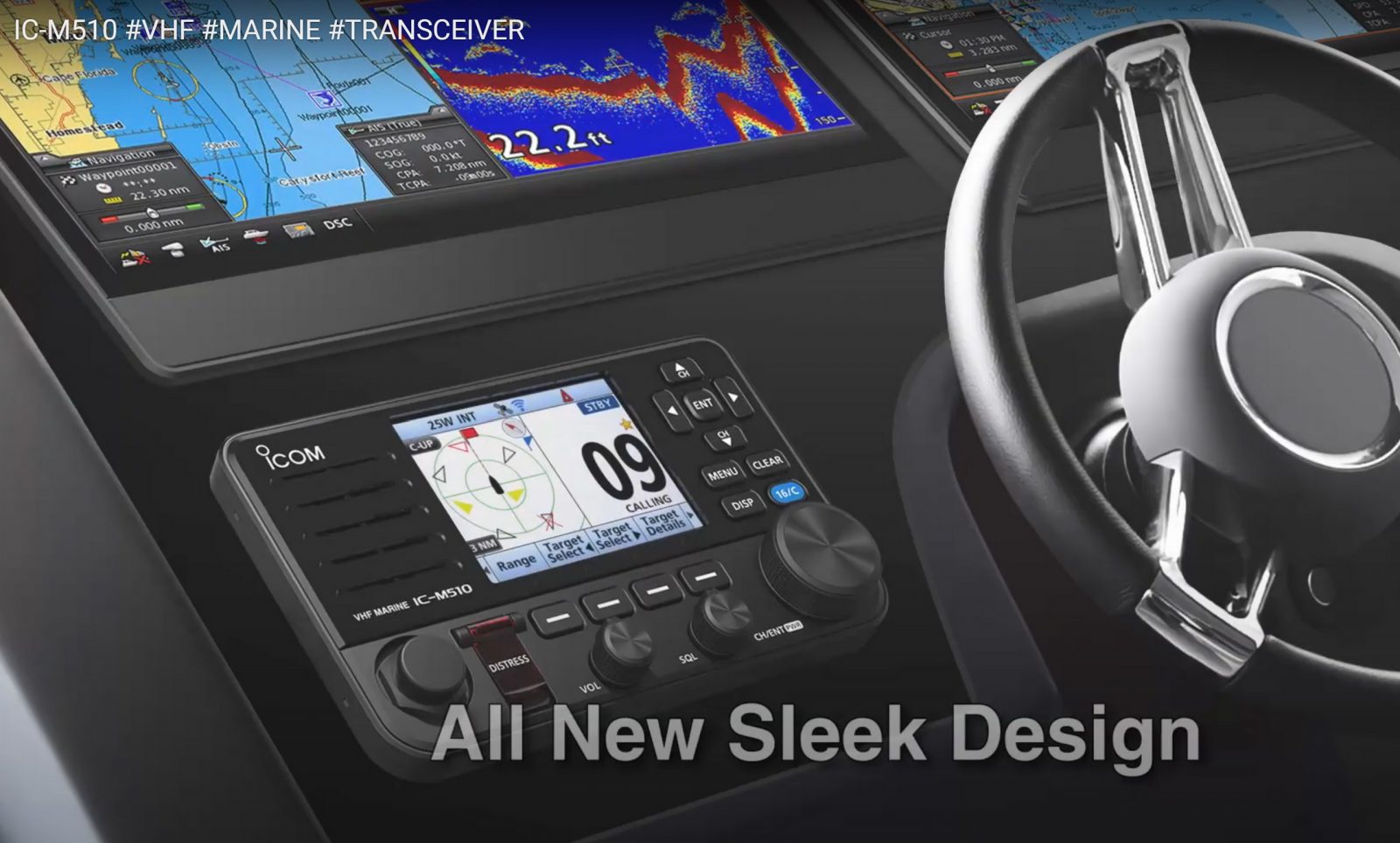
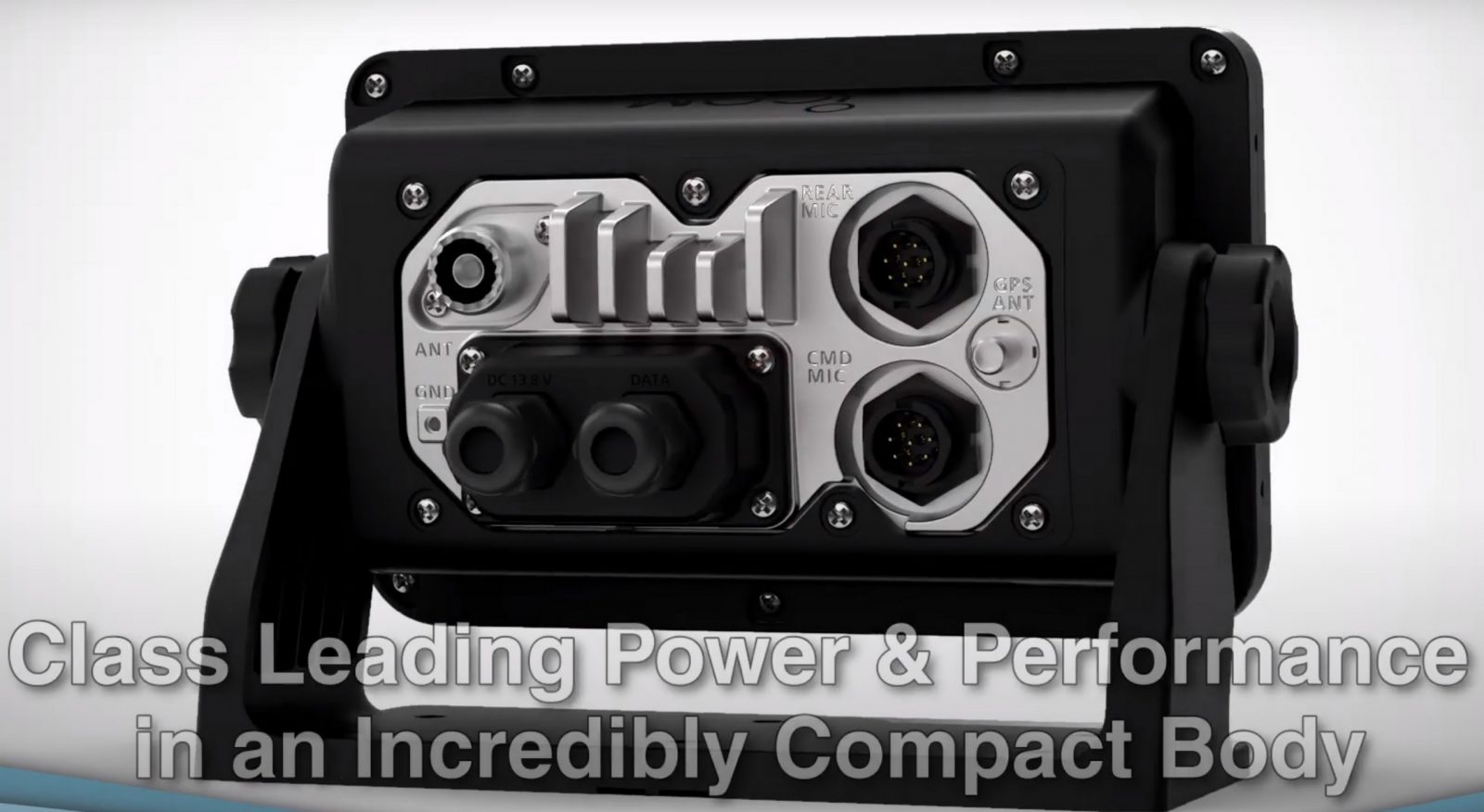
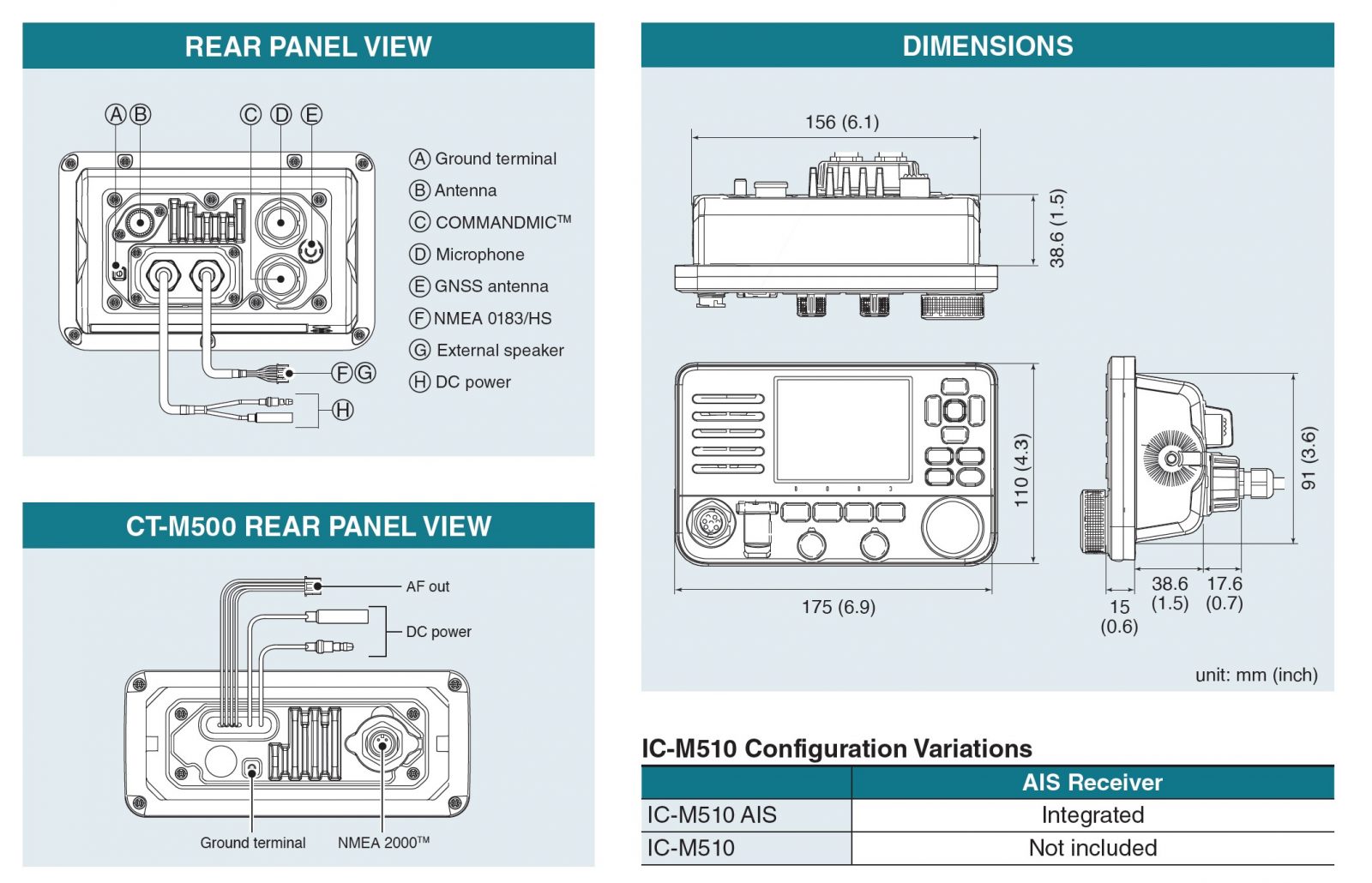
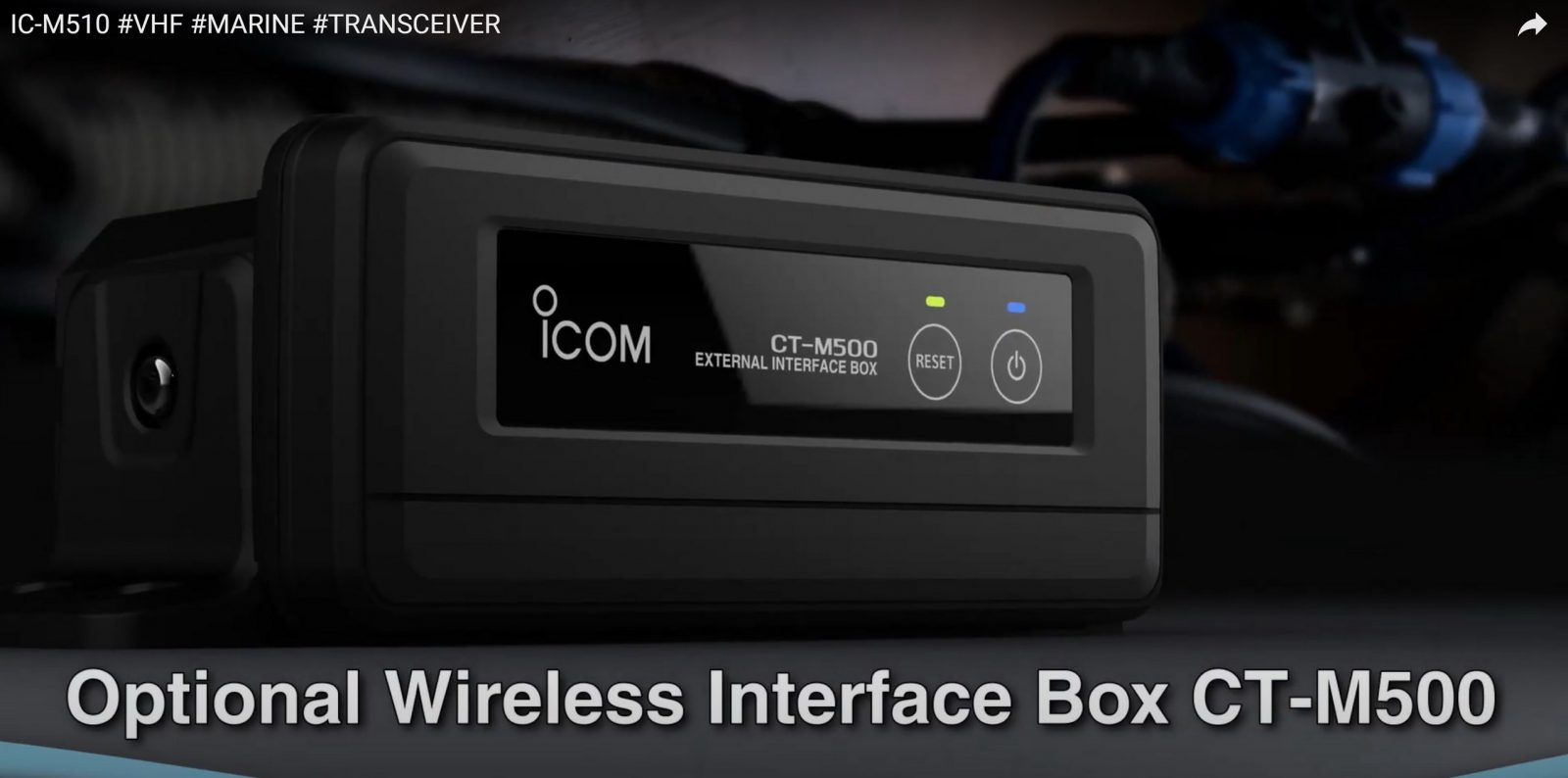
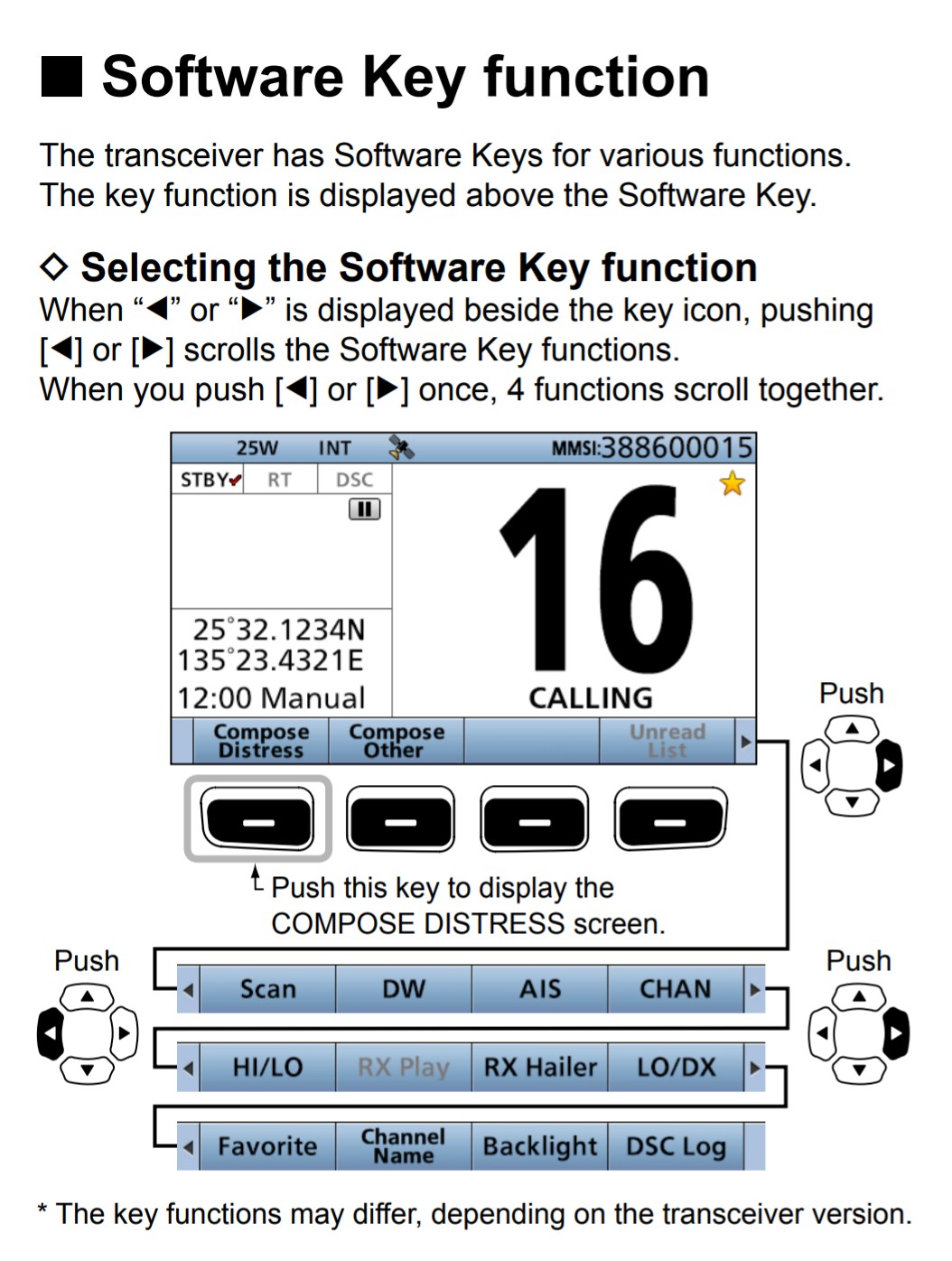
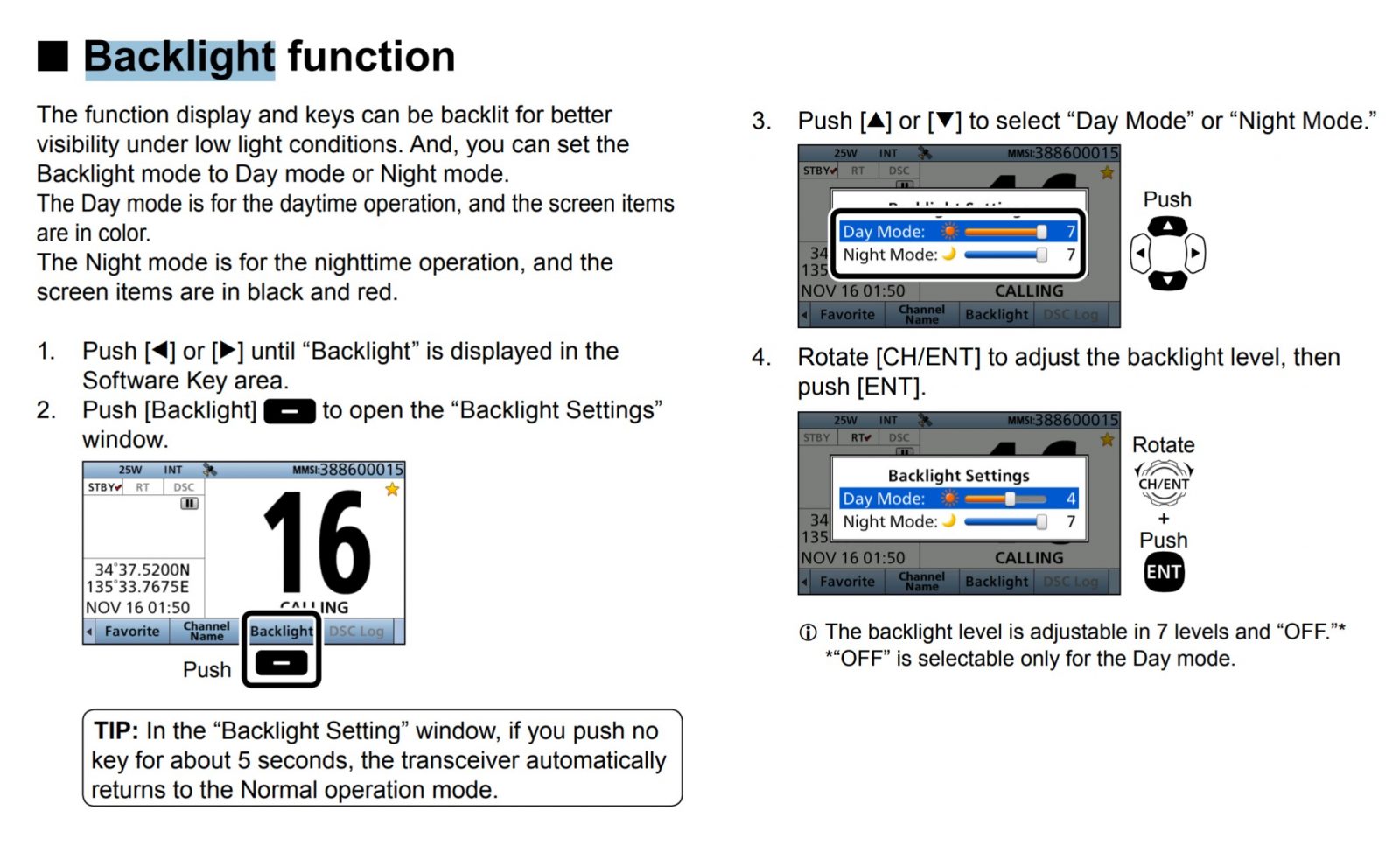

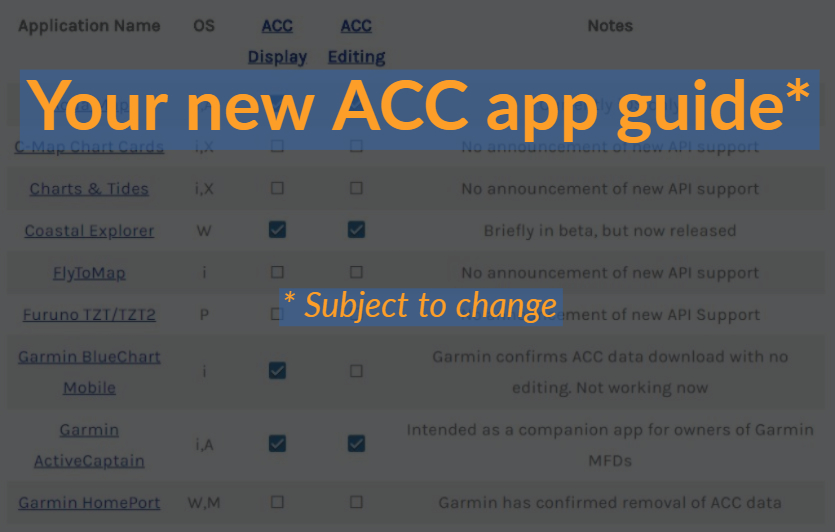

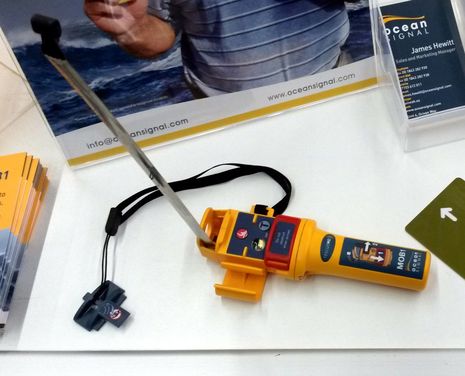







Nice to see radio manufacturers finally integrating newer technologies. However, I don’t understand why both Icom and Standard Horizon make no effort to simplify retrofitting. The size and shape of their newer units are radically different from the units produced over many years in the past. It would cost more than the radio itself for me to attempt to swap my trusty Icom M604 and rebuild the helm cutouts.
I also noticed that the M510 continues to use what Icom calls a “Flush Mount Kit” to fasten the radio when it’s mounted in a helm panel cutout. And I think that Standard Horizon does similar. It means that you need access to the whole back of the panel to get the job done. Meanwhile, VHF sets from Garmin and others have surface fasteners so they’re easier to mount or dismount (though the fastener covers can be annoying).
I didn’t even get to that issue! Furuno is the only manufacturer that seems to consistently provide a retrofit path. For the TZT 3, they even offer an adapter so you can use the cutout for Simrad and Garmin MFDs.
It seems such an obvious marketing benefit that I find it puzzling they don’t try to make it easy to update the hardware.
Fred, It’s a quite common issue and an obvious barrier to “impulse” upgrades on my part. I’ve been using intermediate mount that I attach the radio/whatever to and screw the intermediate piece to the dash. This works within reasonable limits and doesn’t look too clunky. Note that Furuno that different from other manufacturers. The new TZ3 12″ MFD has significantly different dimensions from the TZ2 12″ MFD. I’d love to upgrade since the latest firmware update causes my system to reboot and I don’t know if the issue will be resolved with the next update. I face a challenge moving things around on the dash to make room and then there is the physical bracing necessary to support the dash that also would need to be modified.
Having said that, I think the connection of cell phones to the VHF is a great idea. Thanks for reporting Ben!
That’s not an option at my helm, which doesn’t have too much mounting area. The Icom M604 barely fits.
I just can’t believe it would be so challenging for the manufacturers to have designed around the same cutout size. I also have a Standard Horizon GX5500, which is wider but narrow than the new GX6000. In fact the area of the faceplate is virtually identical on both units so it has to be feasible to have used the same footprint even with the bigger display.
The Icom 510 will purportedly ship by the end of this month and most pricing is in place:
M510 W/O AIS: $599.99
M510 +AIS: TBD
CT-M500: “$299.99 and down”
Any idea whether there will be a wireless command mic ? Mobile phone connection is great, but not a ideal in a marine environment
I just had one installed on a 116. Great VHF but… so far the IOS version of the RS-M500 app is not available for download and install in the US App store!
Follow up… the app became available a month after my comment. It s ok but you can not use the app simultaneously with the hailer. You have to disconnect the hailer to use the app and then reconfigure the hailer. It s a PITA
Has an AIS version of the M510 shipped? None of the Icom resellers have anything listed.
I would like to see the ptt button on the unit itself instead of a wired mic.
I finally got to see the M510 at METS, and it looks as sharp as the photos. IcomUK told me that the radio has been quite popular, and while they agree that the CT-M500 wireless N2K/hailer add-on was an odd design choice, it has not caused issues for their customers. They also noted that an especially appreciated feature is using the smartphone app with wireless earbuds so a crewperson has a hands-free intercom connection with the helm during docking and anchor/mooring maneuvers.
Aha! Icom’s brand new M510 Evo model puts the NMEA 2000 and hailer connections right on the radio, instead of via the awkward and expensive CT-M500.
https://www.icomamerica.com/lineup/products/IC-M510_evo/
Pricing isn’t clear yet, and please let us know if you see the M510 EVO for sale somewhere.
Ben Stein tells me that the M510 EVO was on display in Miami and will be shipping soon. In fact, it’s starting to show up online with the street price looking like $800 — or $950 for the model with an AIS receiver, sometimes called Plus. That’s a better deal, and an easier more reliable install, for any user who wants NMEA 2000 and/or hailer:
https://seatech.systems/product/icom-ic-m510-evo-fixed-mount-vhf-with-gps-dsc-wifi-and-optional-ais/